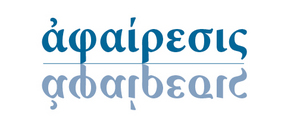Apheresis: It’s Greek to Me
By Billie Rubin, Hemoglobin’s Catabolic Cousin, reporting from the labs of Stanford Blood Center
In Greek, apheresis means “to remove or to separate a part from the whole.”
Here are a few facts from the “Core Curriculum for Nephrology Nursing”:
In the 1940s Dr. Edwin Cohn adapted a cream separator machine to separate plasma from whole blood for use in injured soldiers during WWII (and to prepare half & half for tea).
In 1951 Human plasma was made commercially available.
In the 1950s Dr. Cohn, while at the Harvard Medical School, invented the “Cohn Fractionator”, which was successful in separating blood into all of its components.
In 1987 COBE Spectra introduced a continuous-flow centrifugation device used for plasma exchange, cytapheresis and other clinical applications.
Thus the dawn of apheresis began and we can now separate the various parts of your blood, allowing us to collect only the specific components needed for patients that day. It’s a very efficient way of directly helping patients in hospitals!
To inquire about apheresis donations, please call 888-723-7831.

